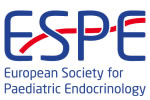hrp0084p1-77 | Fat | ESPE2015
Evaluation of Adiponectin Concentrations in Obese Children and Its Correlation with Lipid and Carbohydrate Parameters
Ruminska Malgorzata , Majcher Anna , Pyrzak Beata
hrp0086p2-p949 | Thyroid P2 | ESPE2016
Thyroid Function in Obese Children and Its Correlations with Chosen Atherogenic Risk Factors
Ruminska Malgorzata , Witkowska-Sedek Ewelina , Majcher Anna , Pyrzak Beata
hrp0092p1-73 | GH and IGFs | ESPE2019
Influence of Birth Parameters on Growth Response and Metabolic Effects of Growth Hormone (GH) Therapy in GH-deficient Children and Adolescents
Witkowska-Sedek Ewelina , Ruminska Malgorzata , Kucharska Anna M. , Majcher Anna , Pyrzak Beata
hrp0092p3-81 | Diabetes and Insulin | ESPE2019
Cerebellum Malacia Lesions as a Result of Severe Diabetic Ketoacidosis in 12 Month Old Patient
Brandt-Varma Agnieszka , Szmigiero-Kawko Malgorzata , Mysliwiec Malgorzata
hrp0086p2-p869 | Syndromes: Mechanisms and Management P2 | ESPE2016
Growth Hormone Deficiency in a Patient with Ring Chromosome 18
Korpal-Szczyrska Maria , Mysliwiec Malgorzata
hrp0084p3-626 | Adrenals | ESPE2015
Exogenous Cushing’s Syndrome due to Misuse of Topical Corticosteroid Therapy
Korpal-Szczyrska Maria , Mysliwiec Malgorzata
hrp0092p2-163 | GH and IGFs | ESPE2019
Growth Response in Short Preterm- Born Children Small for Gestational Age in First Year of Growth Hormone Treatment
Korpal-Szczyrska Maria , Szczyrski Jan , Mysliwiec Malgorzata
hrp0092p3-66 | Diabetes and Insulin | ESPE2019
Familial Hypercholesterolaemia as a Cause of Dyslipidemia in Patient with Type 1 Diabetes
Brandt-Varma Agnieszka , Hennig Matylda , Mysliwiec Malgorzata
hrp0089p3-p384 | Thyroid P3 | ESPE2018
Neonatal Hypothyroidism following Transplacental Amiodarone Treatment for Supraventricular Tachyarrhythmia
Korpal-Szczyrska Maria , Mysliwiec Malgorzata , Szczyrski Jozef
hrp0086p1-p256 | Diabetes P1 | ESPE2016
The Incidence of Type 1 Diabetes in the Pediatric Population in Pomeranian Region in Poland
Brandt Agnieszka , Derkowska Ilona , Mysliwiec Malgorzata



